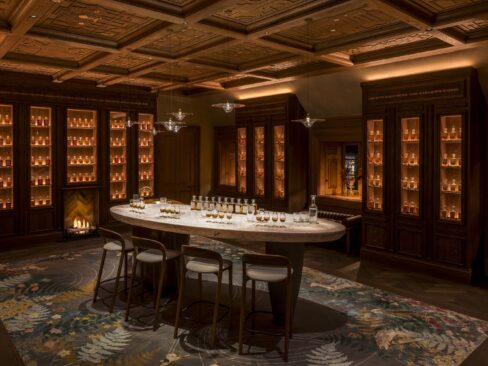

 New York, New York – Reported by Elite Traveler, the private jet lifestyle magazine
New York, New York – Reported by Elite Traveler, the private jet lifestyle magazine
Jean-Claude Biver, Hublot’s CEO, and Andreas Mortensen, a Professor at EFPL (Swiss Federal Institute of Technology Lausanne) unveiled a range of brand new alloys which are set to revolutionize the characteristics of precious materials and may also pave the way for new alloys to be used in the high-tech industry. The presentation focused on a genuine “fusion” of 24-carat gold (the finest of the noble materials and a natural product) and the very latest in high-tech materials expertise. Almost three years of collaboration and research have gone into achieving this impressive result: a completely new type of noble gold, with patents pending and graded 18 carat by the Central Office for Precious Metals Control. Hublot’s 18-carat gold is the world’s first scratch-resistant gold, and as such eliminates the age-old vulnerability of gold and its alloys.
Hardness is a measure of a material’s resistance to indentation; doubling a material’s hardness means doubling the force required to produce a given indentation. Whereas “standard” high-quality 18-carat gold can reach 400 on the Vickers hardness scale, Hublot gold has a hardness rating of almost 1000 Vickers (most hardened steels are up to 600 Vickers). This makes Hublot gold the hardest in the world, and by some margin: it can only really be “scratched” by diamond. Components made from this material are produced using a complex process: boron carbide powder is formed by cold isostatic pressing in moulds very close in shape to that of the finished part, e.g. watch cases, bracelets, bezels, etc. This ceramic – one of the hardest in existence – is also highly refractory: the preforms are then hardened at very high temperatures to create a rigid, porous structure without altering the shape. After this, molten liquid gold is injected under very high pressure. This operation is performed under inert gas pressure, at a sufficiently high temperature and pressure to ensure that the molten metal fills the pores in the ceramic, causing the two to “fuse” into a single new material. The resulting 18-carat Magic Gold must, like other 18-carat alloys, be composed of 750 parts pure gold out of 1000, but the inclusion of ceramic makes this gold scratch-resistant, unlike traditional 18-carat gold. Hublot has now passed the experimental stage for its new gold and acquired the means to produce the new material entirely in its own Manufacture, thanks to a high-tech foundry enabling processes such as refractory ceramic sintering and high pressure metal casting. The first watches made from Magic Gold will be presented at BaselWorld 2012.










